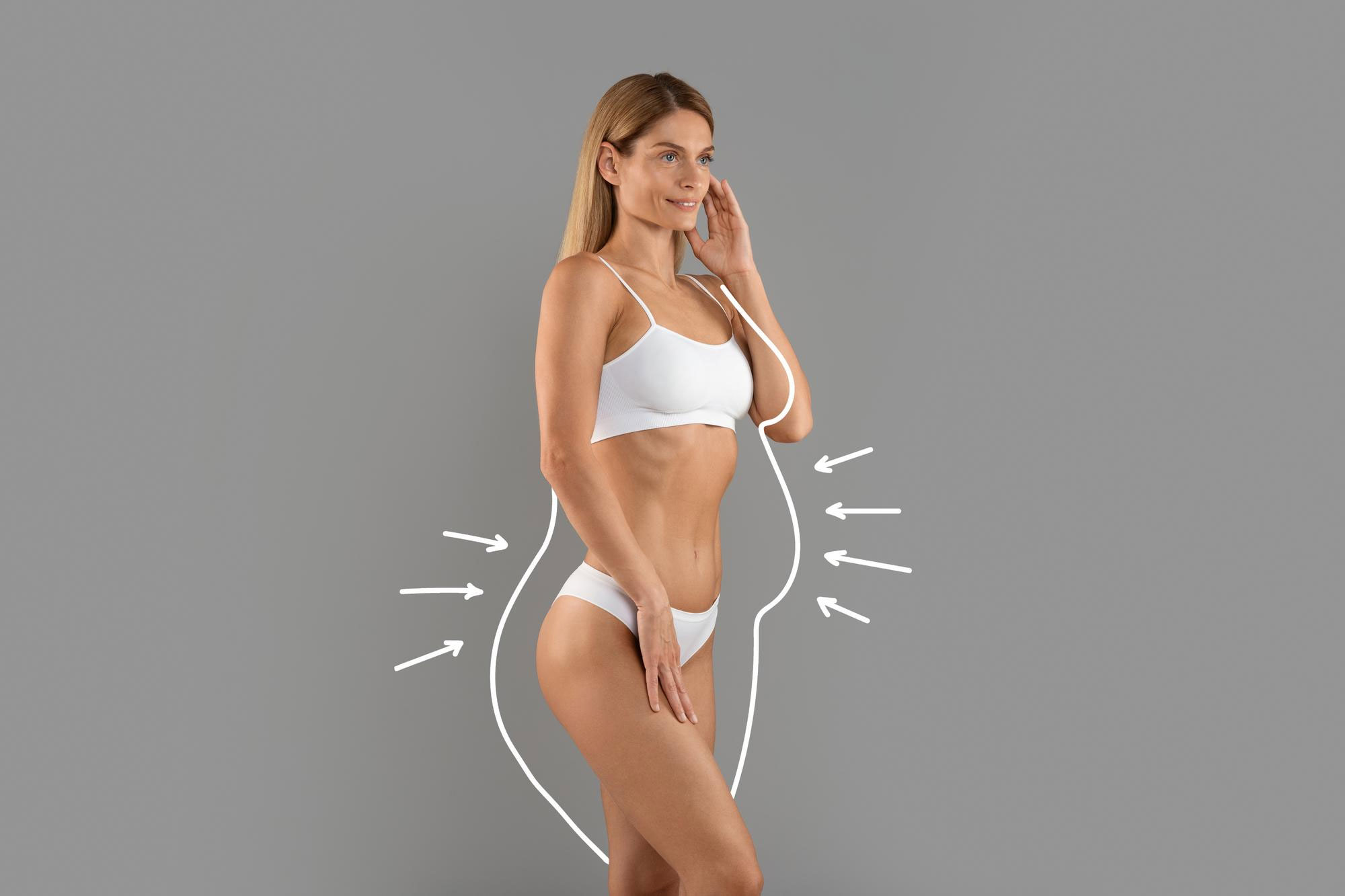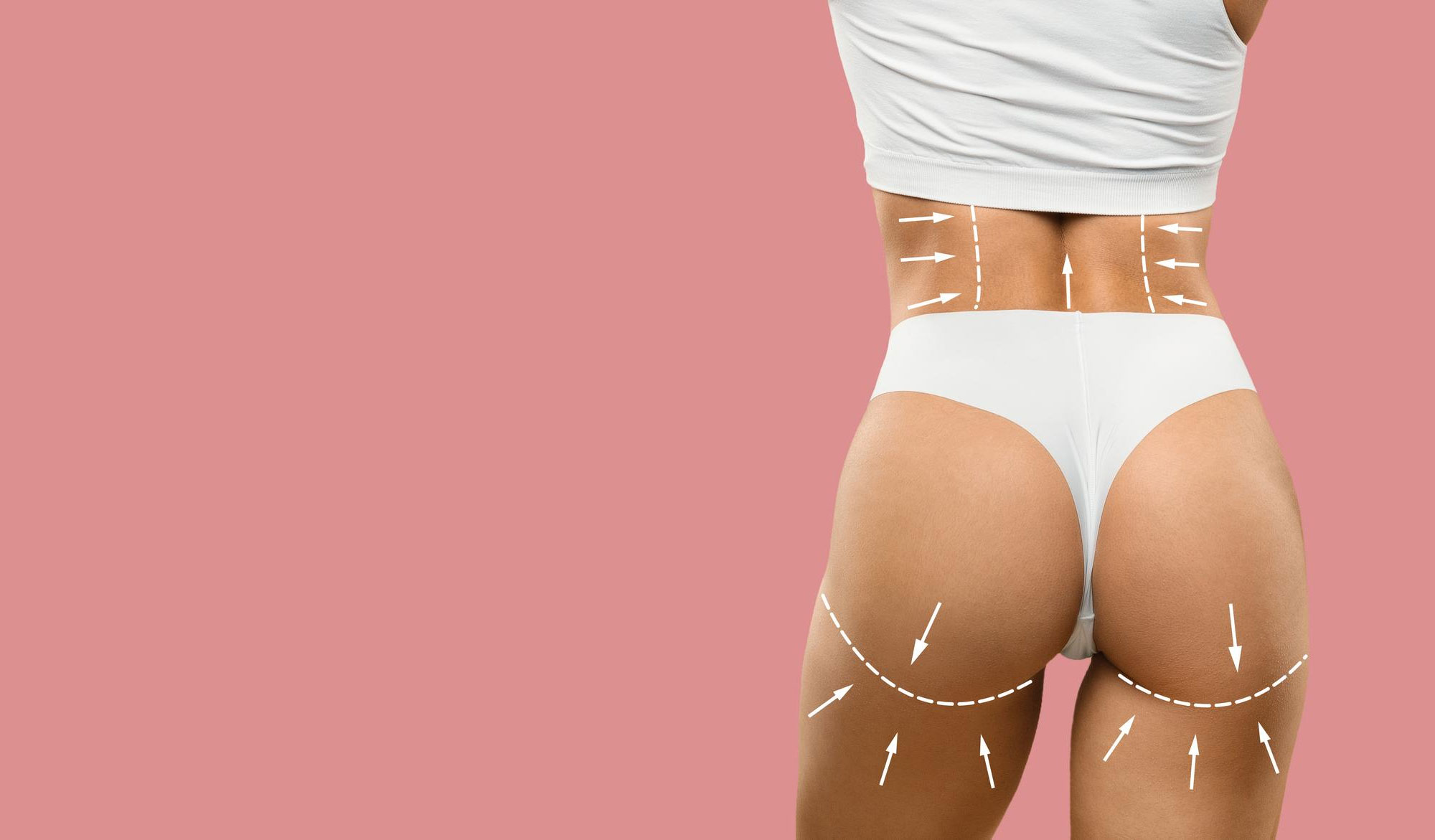What is a gastric balloon?
A gastric balloon is also called an "intragastric balloon" in medicine. Basically, it is a balloon made of a soft, usually silicone-like material that can be inflated with air or liquid. This balloon is inserted into the stomach endoscopically or, in some cases, swallowed through the mouth. The aim is that this "foreign guest" occupying part of the stomach will create a feeling of satiety earlier. Imagine putting a large piece of furniture in the center of a room: It becomes difficult to fit any more furniture in that room. Similarly, the gastric balloon partially fills the cavity in the stomach and automatically limits the amount of food you take in.
The balloon is usually used for up to 6 months. Some special adjustable balloons or extendable applications can extend this period up to 12 months. However, which type of balloon to choose and how long it will be used is shaped by the person's health status, weight loss goals and doctor's recommendations.
How is a Gastric Balloon Inserted?
Endoscopic Method
The gastric balloon is often inserted endoscopically. Endoscopy is a procedure in which a thin tube with a camera at the end is inserted through the mouth and advanced into the esophagus and stomach. This allows the doctor to directly observe what is happening inside the stomach and position the balloon appropriately. The procedure can be summarized as follows:
Light sedation or anesthesia: Light sedation is usually used to make the patient comfortable. Complete anesthesia (general anesthesia) is not necessary in most cases, but may vary according to the patient's comfort and the doctor's preference.
Endoscopic examination: In the first step, the general condition of the stomach is checked for ulcers or significant structural problems.
Balloon insertion: A small, deflated balloon is inserted into the stomach using an endoscope.
Inflation of the balloon: The balloon is inflated with liquid (saline) or air. The procedure is completed by inflating to a level that fills approximately a certain portion of the stomach capacity (e.g. 400-700 ml).
Control: Any leakage or malpositioning of the balloon is detected and necessary corrections are made.
Ingested (Gas-Filled) Balloons
Some balloons developed in recent years are swallowed as capsules to reduce the need for endoscopy. The person swallows a capsule with the help of water; when the balloon reaches the stomach, the doctor inflates the balloon with gas through a small tube inside the balloon. Thus, the procedure can be completed in a short time under outpatient clinic conditions without the need for endoscopic intervention. However, removal of the balloons placed with this method is also performed by endoscopy.
How Does a Gastric Balloon Work?
Mechanical Saturation (Gastric Volume Effect)
The balloon placed in the stomach basically occupies part of the stomach cavity. Imagine that your stomach is like a pouch that can stretch. Normally, the volume of the stomach is quite variable, but when a balloon is inserted, the useful space for the stomach to expand is reduced. This causes the person to feel full more quickly when they eat. Imagine putting a "float" in the middle of a jug: When you want to fill it with water, it can hold less water.
Hormonal Regulation
In the body, hunger and satiety are fine-tuned by many hormones (e.g. ghrelin, leptin, cholecystokinin). Some studies have suggested that a gastric balloon can positively affect the balance of secretion of these hormones and increase the feeling of fullness. Therefore, the person feels the need to eat less, not only mechanically but also with hormonal support.
Slower Stomach Emptying
In some patients, the presence of the balloon may slightly slow down the passage of food from the stomach to the intestines. This slowdown provides a long-lasting feeling of satiety and reduces the need for snacks or snacks. In other words, these complaints of those who say "I feel hungry again shortly after eating" can be reduced to some extent thanks to the balloon.
In Which Situations Can Gastric Balloon Be Preferred?
Overweight People Bordering Obesity
Generally, people with a body mass index (BMI) between 30-40, that is, those who are clinically obese or approaching the border of morbid obesity, can benefit from this treatment. BMI is a rating of a person's weight in relation to their height and is defined as obesity above 30 and morbid obesity above 40.
Patients Not Suitable or Unwilling for Surgery
Surgical methods such as gastric sleeve and gastric bypass have certain risks and irreversible effects. Some people are not candidates for these surgeries or are not interested in surgery. The gastric balloon offers an alternative as it is a less invasive method compared to surgery.
Those who have not gotten results from weight loss attempts
The gastric balloon can be a temporary but effective support for people who cannot achieve success with diet and exercise, or who have managed to lose weight but gain it back quickly. Of course, the success of this method increases when supported by a healthy diet and physical activity.
As Pre-Surgical Preparation
Some physicians may recommend that overweight people lose a certain amount of weight with a gastric balloon before bariatric surgery. In this way, the operation process becomes easier and anesthesia risks are reduced.
What Should Be Considered Before and After Gastric Balloon?
Before Gastric Balloon
Detailed Examination and Evaluation: Blood tests, endoscopic examination and sometimes additional tests may be requested to determine whether the person is suitable for a gastric balloon.
Psychological Evaluation: Weight problems can sometimes be based on deep psychological reasons. Therefore; the presence of conditions such as eating disorders and depression should be taken into consideration before gastric balloon application.
Preparation Diet: Before the procedure, a liquid or soft diet can be applied as recommended by the doctor. This ensures that the stomach is empty and the procedure is performed smoothly.
After Gastric Balloon
Diet Liquid or pureed foods are consumed for the first few days. As the stomach gets used to the presence of the balloon, more solid foods are gradually introduced.
Mood and Acclimatization: Some people may experience side effects such as nausea, vomiting and cramps in the first few days. These symptoms usually subside in a short time.
Clinical Follow-up: Regular follow-up visits after balloon placement are very important for ideal weight loss and a healthy process. Complying with the planned controls with a nutritionist or dietician increases the permanent success rate.
What are the Risks and Side Effects of the Gastric Balloon Procedure?
As with any medical procedure, there are certain risks and side effects associated with gastric ballooning. The majority of these are not serious and can be managed; however, there are rare complications that require attention.
Nausea and Vomiting
This is common in the first few days. It can trigger the nausea and vomiting reflex as the stomach tries to get used to the new "guest". It is usually easy to manage with antiemetic (anti-vomiting) drugs and medicines to reduce stomach acid.
Abdominal pain and cramping
Due to the volume effect created by the balloon, the stomach wall may be stretched and tender. This can cause pain in the form of cramps. The body starts to adapt to this pressure after a while.
Reflux and Heartburn
Since the balloon adds additional volume to the stomach, it can increase the chance of stomach acid escaping into the esophagus. This may be more pronounced especially in those with previous reflux complaints.
Deflation of the balloon and intestinal obstruction
It is a very rare but important risk. If the balloon deflates suddenly, it can travel into the intestines and cause a blockage. Most balloons add a special colored substance to the balloon fluid to detect this risk early. Thus, if this color is seen in the urine or stool, it is easier to understand whether the balloon is leaking or not.
Ulcer or Gastritis
Continuous contact of the balloon with the stomach wall can sometimes cause irritation or even ulcer formation. This risk increases with prolonged or over-inflated balloons.
Rare Serious Complications
Complications such as perforation (rupture) of the stomach, serious infections or severe fluid-electrolyte balance disorders are very rare but possible.
How does life change after a gastric balloon?
After the gastric balloon is placed, the person's eating habits and daily routine will change to some extent. The most critical point here is to fully evaluate the contribution of the balloon to the person's life. It is possible to think of the gastric balloon as a "turbo boost" that helps a car when you step on the gas. But the driver behind the wheel is still the same person. That's why proper nutrition and exercise habits are vital for sustained success.
Smaller Portions: Because the balloon provides fast satiation, portions are automatically smaller. This reduces daily calorie intake.
Less Snacking Cravings: Since the stomach is always "partially full", sudden bouts of hunger and the need for unnecessary snacking can be reduced.
Active Lifestyle: Losing weight improves mobility and can reduce joint pain. However, it is important to make activities such as regular walking, light brisk exercise or swimming a routine.
Positive Psychological Impact: Weight loss can increase self-confidence and encourage more active participation in social life. However, sometimes people may continue to carry psychological burdens related to their weight. Therefore, getting psychological support, if necessary, makes it easier to adapt to the new life.
Is the gastric balloon effective in long-term weight loss?
The gastric balloon is not a permanent device. It is usually removed after 6 or 12 months. The aim is to lose weight during this time; so what happens after the balloon is removed?
Weight Maintenance: According to expert opinions and research, those who maintain healthy eating habits after balloon removal can significantly maintain their weight.
Risk of Weight Gain: After the balloon is removed, the stomach may slowly return to its former capacity. If the person surrenders to old eating habits again, unfortunately, the lost weight can be regained. This raises the question: is the balloon only a temporary solution? Actually, yes: The balloon is a method that offers an "initial boost" to weight loss. But lasting success depends entirely on nutrition and lifestyle changes.
Second or Repeat Application: The person may want to use the balloon again. This may be necessary or advisable in some patients. However, if the first procedure was unsuccessful, it is important to focus on the causes and correct the mistakes.
How to Choose Between Types of Gastric Balloon?
There are multiple types of gastric balloons on the market. Here are the main factors to consider when making a choice:
Liquid Filled Balloons
For example, brands such as Orbera fall into this group. It is inserted endoscopically and usually stays in place for 6 months. A colored substance can be added to the balloon fluid so that a change in urine color can be noticed in case of a leak.
Gas Filled Balloons
Systems such as Obalon, for example, are swallowed as capsules and then inflated with gas. Because it is lighter, some people may experience relatively fewer side effects such as nausea. However, removal is still performed endoscopically.
Adjustable Balloons
Some balloons, such as Spatz3, have a mechanism that can be increased or decreased in volume as needed. Thus, the volume of the balloon can be reduced if the patient feels too many side effects, or the volume can be increased to provide a new "stomach stimulus" if weight loss slows down.
Balloons without Endoscopy (Non-Procedural)
Some innovative balloons (e.g. Allurion Elipse) can be swallowed as capsules and excreted naturally after a certain period of time. However, like other balloons, their safety and long-term results require regular follow-up.
The choice is shaped by the person's stomach structure, past medical history, the amount of weight targeted and most importantly, expert opinion.
What Can Be Done to Increase the Success of Gastric Balloon Procedure?
Regular Nutrition Program
A gastric balloon does not eliminate the tendency to eat fast food, pastries or sugary foods. However, it makes it easier to feel full. It is very important to take this opportunity to establish healthy eating habits. Controlling the daily intake of protein, vitamins and minerals; increasing the consumption of vegetables and fruits; and focusing on fibrous foods are the basic steps.
Active Life
Even simple brisk walks of 30 minutes every day are effective in accelerating and maintaining weight loss. You can also try other forms of exercise such as gymnastics, swimming or cycling. But the key point here is to make sports a "daily routine" rather than an "obligation".
Psychological Support
Emotional eating episodes and uncontrolled eating habits under stress can overshadow the effect of the bubble. The support of a specialized psychologist or psychiatrist can be very helpful in managing one's emotional fluctuations.
Regular Monitoring
After the balloon is placed, it is advisable to visit the doctor and dietitian at regular intervals. In this way, possible complications can be recognized early and the nutrition program can be updated specifically for the patient.
Conclusion and General Evaluation
The gastric balloon can be an effective interim solution for people who cannot achieve the desired weight loss with diet and exercise or who do not prefer surgical methods. This balloon, which is placed inside the stomach, creates a feeling of satiety more quickly with its volume effect and hormonal regulation. Therefore, it offers a support that reduces daily calorie intake and accelerates weight loss.
However, it is important to underline the following fact: The gastric balloon is not a "miracle" treatment in itself. The advantage of the balloon is that it provides a great opportunity to adjust one's eating habits and activate one's lifestyle. When the balloon is removed, maintaining the healthy habits gained is essential for permanent weight control. Otherwise, it would not be surprising to regain the lost weight when returning to the "old order".
Another important issue that should be known in this process is that, as with all medical applications, the use of gastric balloon carries risks. Complications such as nausea, vomiting, reflux, ulcer and even balloon leakage or obstruction may occur, although rare. Therefore, appropriate patient selection and regular follow-up are extremely important. Processes carried out under the supervision of an expert team, with the support of a dietitian and, if necessary, a psychologist, usually yield much more successful and lasting results.
Weight control is at the center of both physical and mental health. The gastric balloon is a step in this direction. How successful this step will be depends on how the person makes use of this opportunity. With adequate support, the right information, patience and motivation, the gastric balloon can make a significant contribution to long-term weight loss.
To summarize; gastric ballooning is seen as an important part of the spectrum in the fight against obesity. It is not as radical an intervention as surgery, but when integrated with diet, exercise and healthy lifestyle changes, it can produce effective results. The key point is not to think of the balloon as a "magic wand that can solve all problems on its own", but rather as a catalyst for lifestyle transformation. In this way, both one's health and quality of life can visibly improve.






























